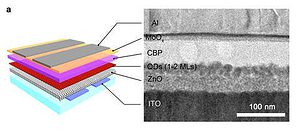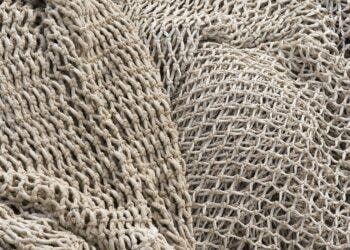
Capable of illuminating in a wide array of pure colors and operating at high efficiency, quantum dot LEDs are set to become the future’s foremost illuminating medium. However, at this time, these fantastic quantum dot light emitting diodes are limited by a physical effect which triggers after a certain photon barrier is crossed, becoming highly inefficient thereafter. This has made them commercially nonviable, however recent work by the Nanotechnology and Advanced Spectroscopy team at Los Alamos National Laboratory could provide a working solution that might usher in a new age of lighting.
Quantum dots are nano-sized semiconductor particles whose emission color can be tuned by simply changing their dimensions. They feature near-unity emission quantum yields and narrow emission bands, which result in excellent color purity.
“QD-LEDs can potentially provide many advantages over standard lighting technologies, such as incandescent bulbs, especially in the areas of efficiency, operating lifetime and the color quality of the emitted light,” said Victor Klimov of Los Alamos.
Chances having that you’re using at least one incandescent light bulb in your home or office right now. The truth is these should be called incandescent radiators, since these only generate 10% light from provided power, while the rest of 90% is lost as heat! Using LEDs, however, electricity is converted directly into light resulting in a much more efficient process.
QD-LEDs are particularly attractive due to their spectrally narrow, tunable emission, and ease of processing. This is why scientists in solar cell research are so seduced by them. In the past few years massive leaps forward in the QD-LED research have been made, however one major obstacle hindered their market introduction. At high current QD-LEDs perform poorly, a problem known as ‘droop’. This means you can only use them at low currents or low brightness, obviously not very attractive for most people who need vivid light.
The Los Alamos scientists found that the ‘droop’ is caused by an effect called Auger recombination. In this process, instead of being emitted as a photon, the energy from recombination of an excited electron and hole is transferred to the excess charge and subsequently dissipated as heat. In their paper, published in the journal Nature Communications, the researchers describe the mechanics efficiency losses in QD-LEDs and propose two possible solutions for circumventing the problem.
The first approach is to reduce the efficiency of Auger recombination itself, which can be done by incorporating a thin layer of cadmium selenide sulfide alloy at the core/shell interface of each quantum dot. A second strategy tackles charge imbalance by better controlling the flow of extra electrons into the dots themselves. This can be accomplished by coating each dot in a thin layer of zinc cadmium sulfide, which selectively impedes electron injection.
“This fine tuning of electron and hole injection currents helps maintain the dots in a charge-neutral state and thus prevents activation of Auger recombination,” Jeffrey Pietryga, a chemist in the nanotech team.






